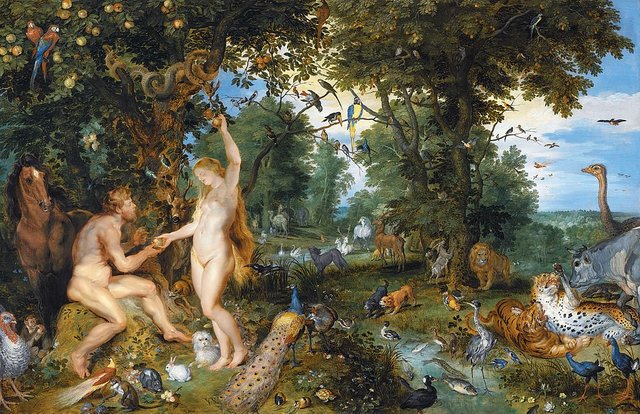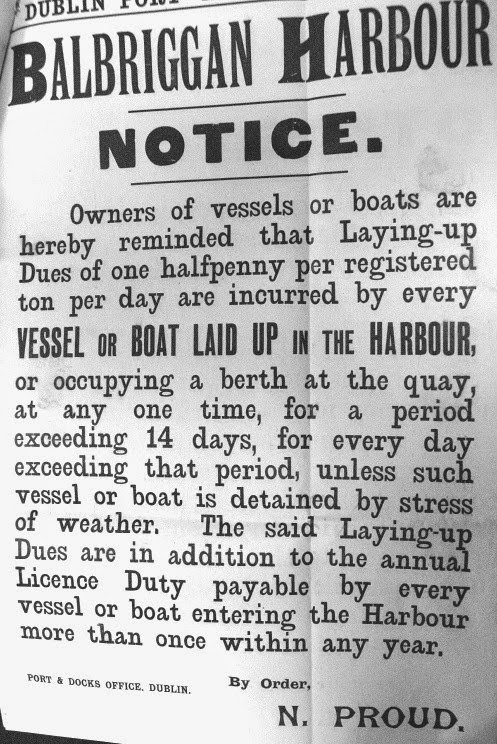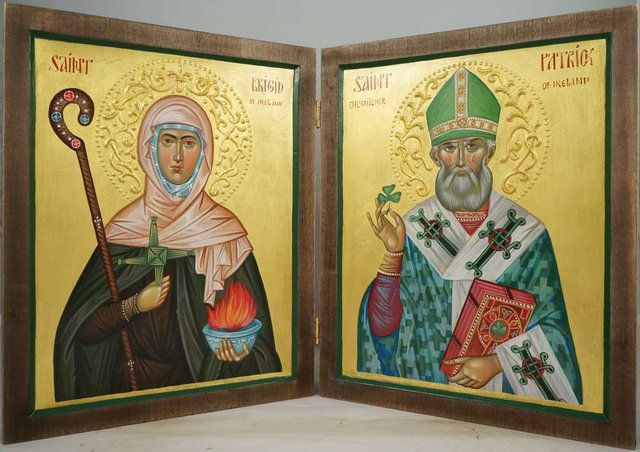So This Is Dyoublong?

To repeat myself again, pages 009-012 in The Restored Finnegans Wake, which we are currently studying, foreshadow Book I, Chapter 5 (RFW 083-099), The Mamafesta—an extended commentary on ALP’s Letter to HCE—as well as a section of the concluding chapter, in which we finally get to hear a version of the Letter in full (RFW 481.28-485.10).
In the two preceding articles, we studied the military and musical aspects of the third, fourth and fifth paragraphs of this section. Before moving on, let’s take a quick look at some of the outstanding issues in these twenty lines.
As we saw, these lines also foreshadow III.4, The Fourth Watch of Shaun, in which the lovemaking of ALP and HCE is portrayed in operatic terms—or perhaps as a silent movie with incidental musical. This casts some light on the so-called Isolde Chord that Joyce introduces in this passage. His immediate inspiration for this, the Tristan Chord, comes from Richard Wagner’s opera Tristan und Isolde, the plot of which revolves around an act of adultery. Recall what Joycean scholars John Gordon and Margot Norris had to say about sexual impropriety in relation to Finnegans Wake:
The Original Sin of Finnegans Wake is the act of intercourse which produced Lucia Joyce [Joyce’s only daughter]. I agree with Margot Norris that the central calamity of the book is what Freudians call the ‘primal scene’—the intercourse of the parents, as witnessed by the child or children. (Joyce seems to have been familiar with the term. See 263.19-21 [RFW 207.13-14].) Specifically, it is the marital copulation at which Issy was conceived, as witnessed by the boys. (Gordon 81-82)
This inordinate emphasis on watching and being watched in the midst of sexual activity ... suggests that this primal sin is in fact a primal scene. [Endnote: The primal scene is the phenomenon of the child watching his parents copulate. In the famous “Wolf Man” case, Freud reports the primal scene expressed in a dream by reversal: instead of watching the kinetic scene, the frozen wolves watch the child.] (Norris 45, 143:5)
It is not too difficult to find overt allusions to the act of sexual intercourse in the present passage:
on her behaviourite job on the job is slang for engaged in sexual intercourse, especially the illicit act of prostitution.
bandy French: bander, to get an erection.
Stippup, mickos! Make strake for minnas! In the second draft of this passage, these two phrases made their first appearance as:
Stand up, mickies. Make leave for minnies.
(The James Joyce Digital Archive)
In Dublin, mickey is slang for penis, so it is clear that the first phrase is referring to a hardon, HCE’s erect penis, which has already been depicted in the local landscape as the Wellington Monument in the Phoenix Park. John Gordon also commented on the final form of this passage:
12.24-25: “Stand up, mickos! Make strake for minnas!” If this was written in 1928 or later—the first draft was written in November, 1926—I’m betting it includes Mickey and Minnie Mouse. (John Gordon’s Finnegans Wake Blog)
The earliest surviving draft—mickies ... minnies—would seem to confirm Gordon’s suspicions, with Mickey Mouse as HCE and Minnie Mouse as ALP. Unfortunately, Joyce wrote this version in late 1926, more than a year before the creation of Mickey and Minnie, so it is just a curious coincidence. By the time transition published a draft of this chapter in April 1927, Joyce had already changed the names to mickos and minnas.

Eden
As this paragraph describes the primal sin of HCE and ALP in Finnegans Wake, it comes as no surprise to discover that it also includes some obvious allusions to the Original Sin of Adam and Eve in the Garden of Eden:
fruting the Forbidden Fruit
treepurty the tree of the Knowledge of Good and Evil
Nicholas Proud ostensibly, this refers to the historical figure of the same name, but Old Nick is Lucifer, whose original sin was the sin of pride:
Proud, Nicholas—one would almost certainly say firmly that he is the Devil (q.v.), for Irenaeus (q.v.) says Satan fell because of “pride and arrogance and envy of God’s creation.” The young Stephen Dedalus (q.v.) fell also in Grose’s (q.v.) sense of “proud” which is “desirous of copulation.” But Mr Mink found in Thom’s (q.v.), 1895, a listing for Nicholas Proud, Esq., who lived at Fortal in Killiney, was secretary of the Dublin Port and Docks Board (Ballast Office). (Glasheen 239)
Arbourhill Latin: arbor, tree.

Financial Matters
This paragraph also contains several allusions to fiscal and financial matters, especially those related to the Church:
fruting for firstlings First Fruits, or annates, one year’s income of a benefice in England and Wales, paid to the Crown from 1535 to 1703 and thereafter to Queen Anne’s Bounty.
quainance bandy Queen Anne’s Bounty, a fund to provide for the maintenance of poor clergymen in the Church of England. It was created in 1703 out of the First Fruits and Tenths.
taking her tithe Tithe, the tenth of the produce of land and stock paid as a tax to the Church. In England and Wales, it comprised a tenth part of the annual profit of a church living, paid after 1703 to Queen Anne’s Bounty.
minnas The mina was a unit of currency in the Ancient World.
sovereign punned sovereign pound. The British sovereign was a gold coin worth one pound sterling.
petery pence Peter’s Pence, an annual tax or tribute of a silver penny from each householder having land of a certain value, paid before the Reformation to the Papal See at Rome. Subsequently, any donation made to the Catholic Church.
In the context of sexual intercourse and Original Sin, these financial references lend a meretricious colouring to the proceedings in the Earwickers’ bedroom.

Other Matters
There are many other allusions in this paragraph that do not relate directly to the subjects we have already discussed. I cannot claim to understand what exactly they are doing here:
scentbreeched and somepotreek St Brigid and St Patrick, infused with the smell of the bedroom’s chamberpot. treeparty also refers to The Tripartite Life of St Patrick. In Finnegans Wake, St Patrick is usually the Oedipal figure (Tristan), while St Brigid is Issy (Isolde). Of course, the Oedipal figure becomes in time the new HCE, while Issy grows up to become the new ALP.
in their swishawish satins and their taffetaffe tights An echo of mishe mishe to tauftauf on the opening page of the book. That phrase was also linked to St Brigid and St Patrick, and seems to represent the nocturnal connection between HCE and Issy, whose voice is transmitted from her bedroom upstairs down the chimney flue in the manner of a walkie-talkie.
Stippup, mickos! Make strake for minnas! This has usually been linked to a phrase or piece of graffiti that was current in Dublin during the Civil War (1922-23): “Move over, Mick! Make room for Dick!” In August 1922, Michael Collins, the Commander-in-Chief of the pro-Treaty Irish Republican Army, was assassinated by anti-Treaty forces. Richard Mulcahy was his successor. The phrase was quoted in the Illustrated Sunday Herald on 26 November 1922. Dick, like mickey, is also slang for penis. In Finnegans Wake, does the Irish Civil War always represent the sibling rivalry between Shem and Shaun?
So This Is Dyoublong? So This Is Dublin! is a 1927 tour guide to the city by Michael Joseph MacManus, in which he satirizes Joyce’s Ulysses:
Mr. James Joyce has been paying a visit to Dublin in search of local colour for the new book which he has planned, to be called An Irish Odyssey. He spent considerable time visiting the Corporation Sewage Farm, the Wicklow manure factory, and the sloblands at Fairview. Before returning to Paris he stated that he had derived keen satisfaction from his visit to his native city. (MacManus )
And with that, let us finally take our leave of these three paragraphs.
References
- Adaline Glasheen, Third Census of Finnegans Wake, University of California Press, Berkeley CA (1977)
- John Gordon, Finnegans Wake: A Plot Summary, Syracuse University Press, Syracuse NY (1986)
- Eugene Jolas & Elliot Paul (editors), transition, Number 1 (April 1927), Shakespeare and Co, Paris (1927)
- James Joyce, Finnegans Wake, The Viking Press, New York (1958, 1966)
- Michael Joseph MacManus, So This Is Dublin!, The Talbot Press Limited, Dublin (1927)
- Margot Norris, The Decentered Universe of Finnegans Wake: A Structuralist Analysis, John Hopkins University Press, Baltimore MD (1976)
- Danis Rose, John O’Hanlon, The Restored Finnegans Wake, Penguin Classics, London (2012)
- Danis Rose, John O’Hanlon (editors), The James Joyce Digital Archive, Online, (2018)
Image Credits
- The Garden of Eden with the Fall of Man: Jan Brueghel the Elder & Peter Paul Rubens (artists), Public Domain
- The Wellington Monument in the Phoenix Park: © Mark Hill, Creative Commons License
- By Order, Nicholas Proud: Fair Use
- St Brigid and St Patrick: © 2013-2019 Blessed Mart Ltd, Fair Use
Useful Resources
- Joyce Tools
- FWEET
- The James Joyce Scholars’ Collection
- FinnegansWiki
- James Joyce Digital Archive
- Annotated Finnegans Wake (with Wakepedia)
- From Swerve of Shore to Bend of Bay

loved you literature post